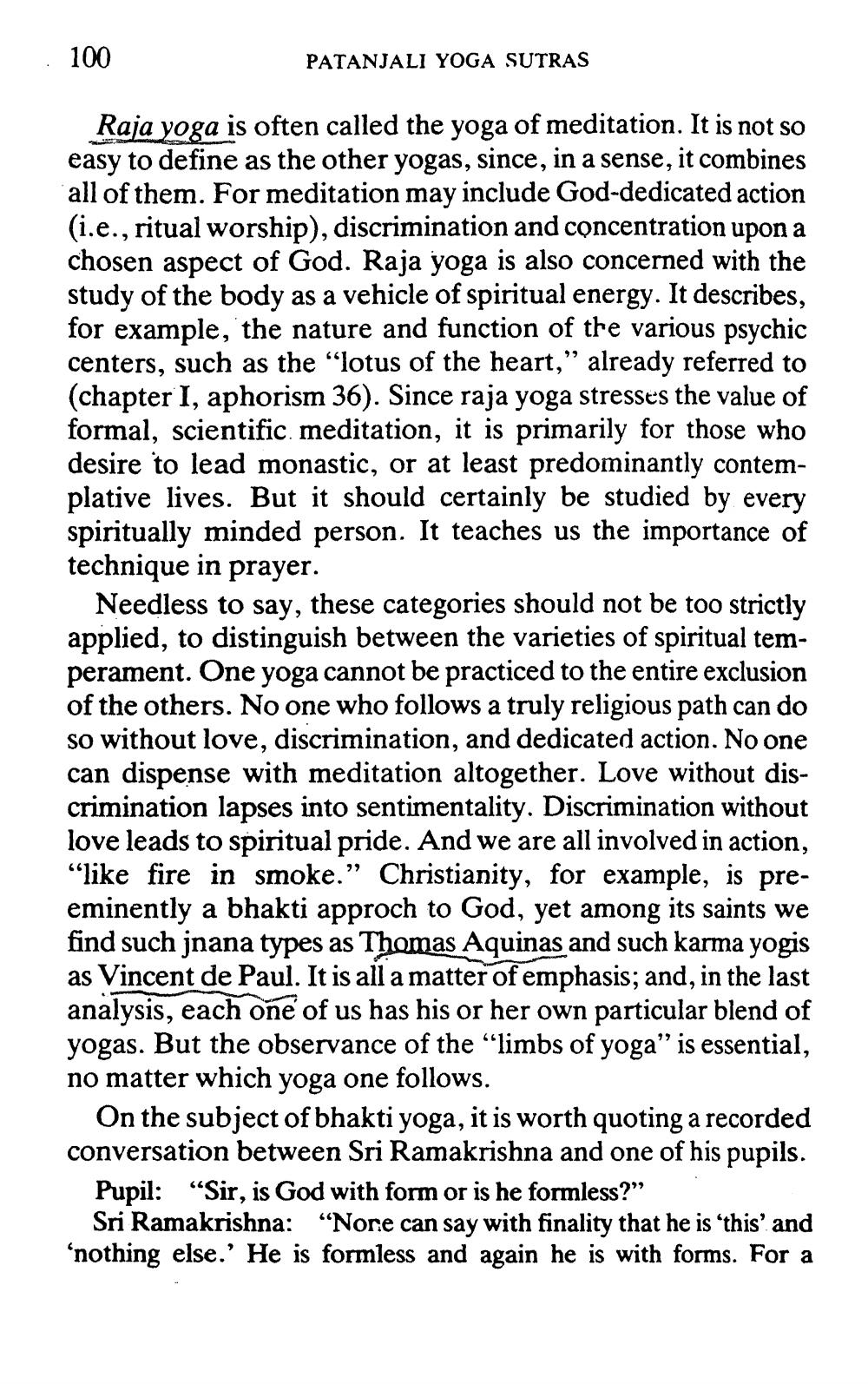________________
100
PATANJALI YOGA SUTRAS
Raja yoga is often called the yoga of meditation. It is not so easy to define as the other yogas, since, in a sense, it combines all of them. For meditation may include God-dedicated action (i.e., ritual worship), discrimination and concentration upon a chosen aspect of God. Raja yoga is also concerned with the study of the body as a vehicle of spiritual energy. It describes, for example, the nature and function of the various psychic centers, such as the "lotus of the heart," already referred to (chapter I, aphorism 36). Since raja yoga stresses the value of formal, scientific, meditation, it is primarily for those who desire to lead monastic, or at least predominantly contemplative lives. But it should certainly be studied by every spiritually minded person. It teaches us the importance of technique in prayer.
Needless to say, these categories should not be too strictly applied, to distinguish between the varieties of spiritual temperament. One yoga cannot be practiced to the entire exclusion of the others. No one who follows a truly religious path can do so without love, discrimination, and dedicated action. No one can dispense with meditation altogether. Love without discrimination lapses into sentimentality. Discrimination without love leads to spiritual pride. And we are all involved in action, "like fire in smoke.” Christianity, for example, is preeminently a bhakti approch to God, yet among its saints we find such jnana types as Thomas Aquinas and such karma yogis as Vincent de Paul. It is all a matter of emphasis; and, in the last analysis, each one of us has his or her own particular blend of yogas. But the observance of the “limbs of yoga” is essential, no matter which yoga one follows.
On the subject of bhakti yoga, it is worth quoting a recorded conversation between Sri Ramakrishna and one of his pupils.
Pupil: “Sir, is God with form or is he formless?"
Sri Ramakrishna: “None can say with finality that he is this' and ‘nothing else.' He is formless and again he is with forms. For a




